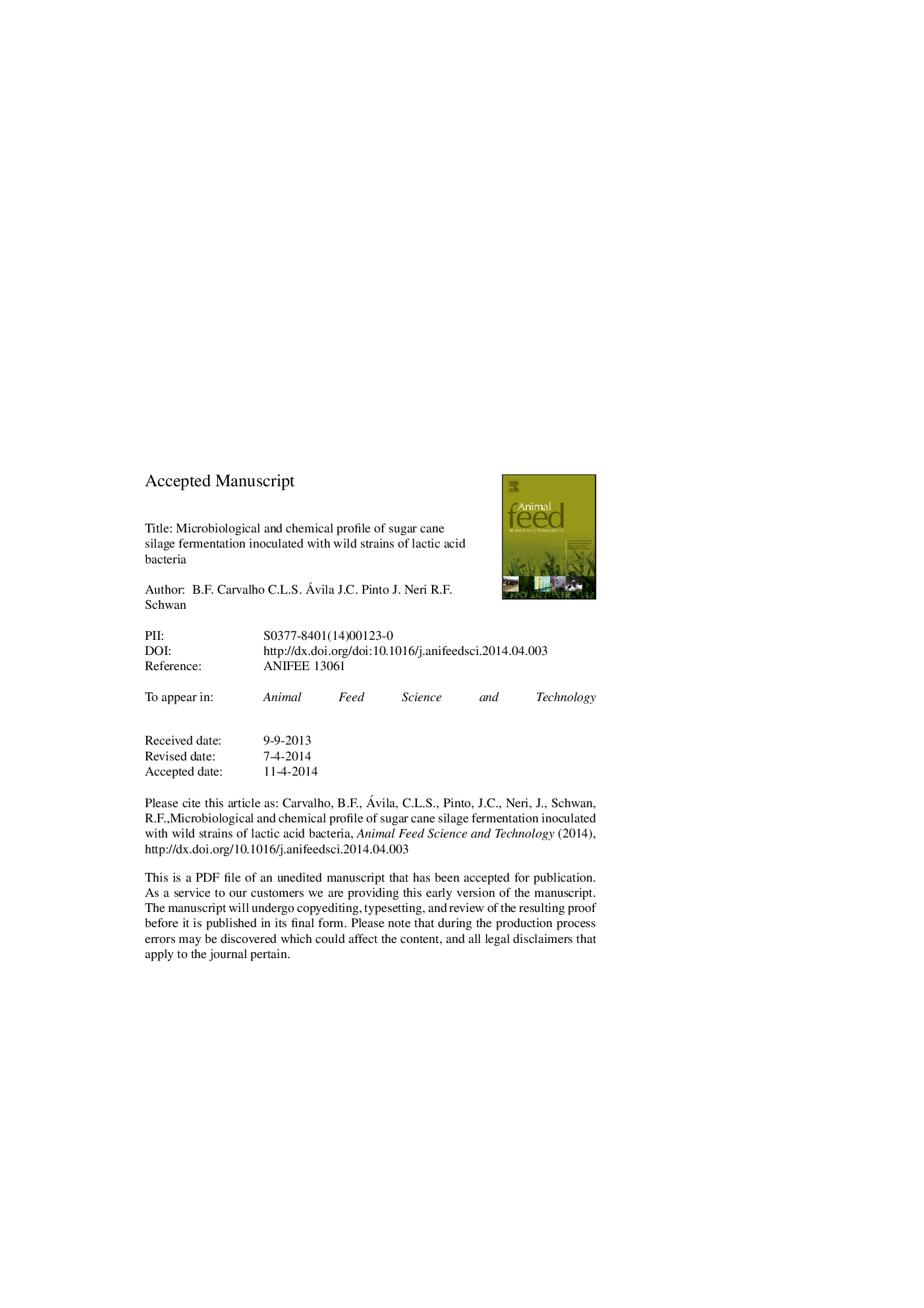| Article ID | Journal | Published Year | Pages | File Type |
|---|---|---|---|---|
| 8491644 | Animal Feed Science and Technology | 2014 | 35 Pages |
Abstract
During sugar cane ensilage an intense growth of yeasts can result in high dry matter (DM) loss and reduction in the quality of the feed. The aim of this study was to evaluate the fermentation profile of sugar cane (Saccharum spp.) silage inoculated with new strains of lactic acid bacteria (LAB) screened for this forage silage. Fourteen wild LAB strains were evaluated, biochemically (API 50 CHL, BioMérieux) characterized, and identified by sequencing of 16S rDNA. The wild isolates were identified as Lactobacillus plantarum, Lactobacillus brevis, and Lactobacillus hilgardii. Different fermentation profiles were observed among strains of the same species. The silages inoculated with L. plantarum species showed the highest yeast population (5.97 log CFU/g silage), ethanol concentration (137 g kg/silage) and DM loss (20.6%) (P<0.01), therefore, they were not beneficial for sugar cane silage. The silages inoculated with L. brevis UFLA SIL17 and UFLA SIL24 and L. hilgardii UFLA SIL51 and UFLA SIL52 strains showed smaller DM loss (12.2%) and NDF-NDF content (573 g/kg silage) (P<0.01). When compared with these inoculated silages, the silages inoculated with L. hilgardii UFLA SIL51 and UFLA SIL52 strains resulted in 57% and 94% more acetic acid and 1,2-propanediol respectively. Obligatory heterofermentative strains showed better silage quality. L. hilgardii (UFLA SIL51 and UFLA SIL52) strains show promise for use in sugar cane silage.
Keywords
Lactobacillus hilgardiiCFURDNAWSCLABDry matter lossVolatile fatty acidsLactic acid bacterianeutral detergent fiberLactobacillus plantarumLactobacillus brevisfresh matterdry mattercolony-forming unitspolymerase chain reactionPCRPVCWater soluble carbohydrateshigh-performance liquid chromatographyHPLCPolyvinyl chloride
Related Topics
Life Sciences
Agricultural and Biological Sciences
Animal Science and Zoology
Authors
B.F. Carvalho, C.L.S. Ávila, J.C. Pinto, J. Neri, R.F. Schwan,
